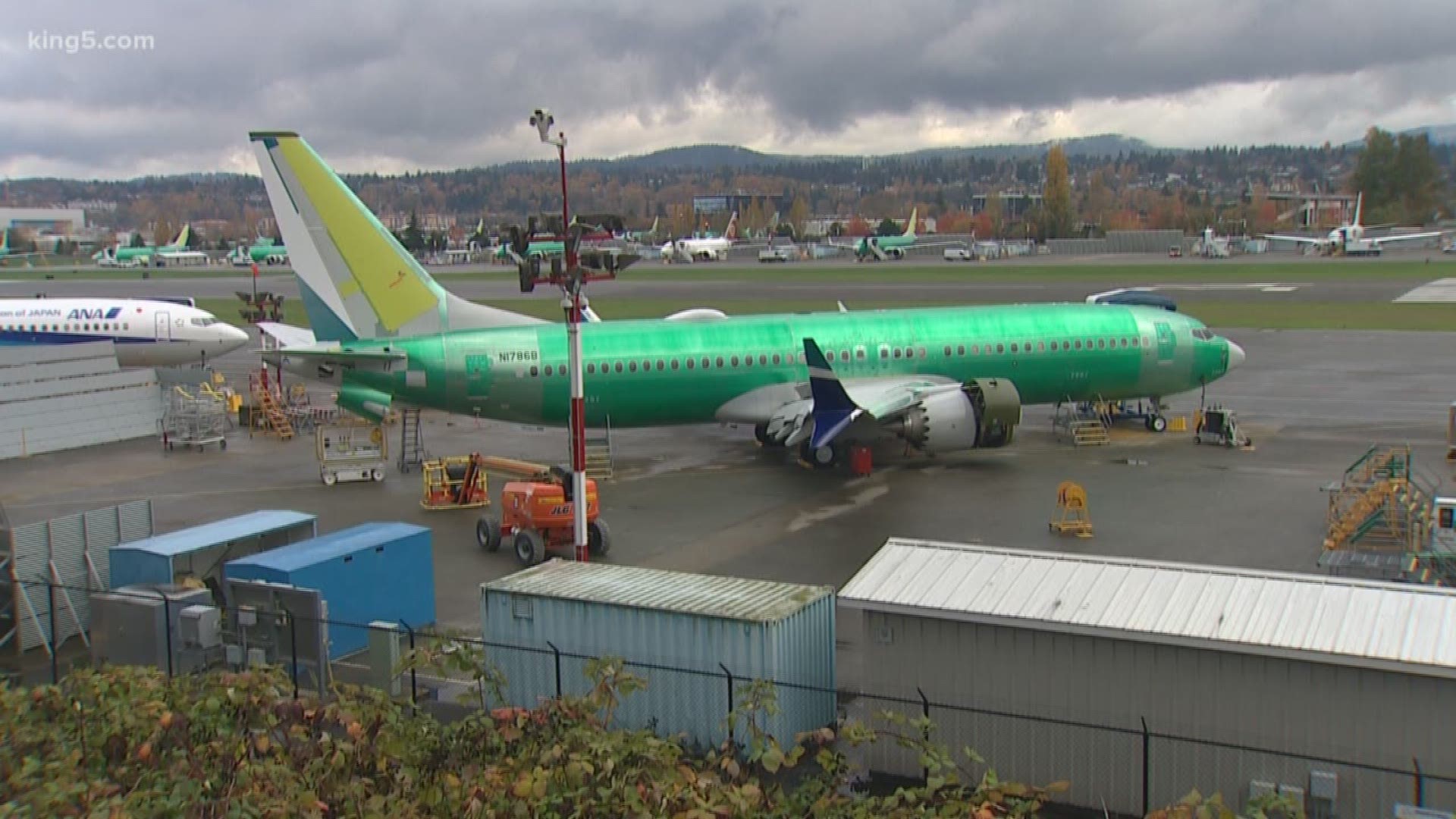SEATTLE — Airlines that fly the new Boeing 737 MAX aircraft were invited to Seattle this week to learn about fixes the company made to the planes.
Roddy Guthrie and Peter Gamble both fly 737s for American Airlines, including the latest MAX model. They accepted Boeing’s invitation and had a chance to run through scenarios in the company’s engineering simulator, or E-CAB, over the weekend.
"I was in the right seat, he was in the left seat,” Guthrie said. “We flew the scenario with the old software in it and the aircraft was naturally controllable through normal trim techniques.”
American Airlines' fleet of Boeing 737 MAX jets remains parked following the Federal Aviation Administration (FAA) grounding order issued in the wake of an Ethiopian Airlines jet crash that killed 157 people on March 10.
The FAA followed a worldwide cascade of groundings once evidence showed the crash had similar physical evidence and flight profile to the October 29 crash of a Lion Air 737 MAX that killed 189 people in Indonesia. The accidents have shaken confidence in the newest version of the world's most popular airliner.
Both investigations have focused on an electronic control feature unique to the 737 MAX called the Maneuvering Characteristics Augmentation System (MCAS).
MCAS is a safety feature designed to keep a pilot from pulling up the nose of the plane so steeply that it would enter a dangerous stall. Investigators and Boeing fear bad data from a single angle-of-attack sensor (AOAs) near the plane's nose could cause MCAS to repeatedly point the nose of the plane down, which possibly led to pilots losing control.
"You could allow it to develop to where you would struggle to control the aircraft, but the natural pilot reaction was to not allow it to develop to that stage," said Guthrie, American’s 737 fleet captain.
Modern jetliners can be constantly monitored. Guthrie said in over 14,300 takeoffs and landings, they had never seen a problem with MCAS, even after surveillance was increased in the wake of the October 29 Lion Air crash when MCAS first came into focus.
MCAS can result in a condition called "runaway trim." This can cause the jackscrew in the back of the plane to spin and force the leading edge of the horizontal stabilizer up, resulting in the nose of the plane to point down.
As previously reported by KING 5, pilots are trained to throw a couple of switches turning the trim off, then move the trim back to a normal position manually if needed. While Guthrie and Gamble never saw any issued with the old MCAS, they are glad a new one will soon be deployed if the FAA signs off on the fix.
"The three things I took away was a redundancy that was added to the system," Gamble said, citing the software change that will no longer rely on data from just one of the two AOAs.
The system fix will limit the movement of the horizontal stabilizer in the back of the plane, so it can’t be controlled more than the pilot through their control column. The fix will also limit the ability of MCAS to activate only once instead of repeatedly counteracting the pilot. This is believed to have occurred in the Indonesian crash.
"So those three inputs right there I think bring the level of safety, which is really what we are all about, back to the cockpit," said Gamble.
After all the concern over MCAS, a senior Boeing official told the media Wednesday it takes about an hour to upload the software changes to the plane. Pilots will get supplemental training on an iPad, which means no further simulator training is considered necessary.
"We have several layers of protection before we ever get to a pilot having to run to a non-normal procedure," said Guthrie. "What we saw effectively means we would never have a runaway stabilizer."
The worldwide publicity surrounding two nearly brand-new planes crashing, contrasted against a background where flying around the globe has never been safer, had passengers questioning whether they should get on a MAX flight.
"I'd say the confidence of passengers has to come with the pilots in the cockpit," Gamble explained. "If we feel confident with what we have in front of it, they should feel confident with us."

